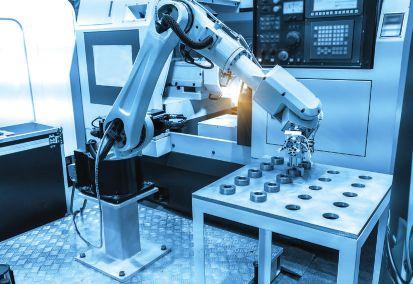
3 minute read
Essentials of remote monitoring and control for operations
Stephen Greene, Stratus TechnologiesStephen
Advertisement
The COVID-19 pandemic is forcing companies to adjust their business practices and settle to a new normal. See four tips on how edge computing and the Industrial Internet of Things (IIoT) can help companies adjust.
M
More
The COVID-19 pandemic demands companies and people think and act differently in challenging odds. For many, the call of the day is maintaining operational levels while our people, the most critical resource, have been constrained by needed social distancing practices and work-from-home requirements. For some, the situation requires scaling back operations with an eye toward how to quickly ramp up as demand returns. For others, this means flexing a production line to a new purpose or level of production under the same constraints. In any case, adjusting operations in real-time makes modern monitor and control capabilities essential. During the COVID-19 pandemic, engineering and operations leaders seek ways to optimize performance under these dynamic conditions. The current situation calls for leaders to lean in and adopt new approaches. This does not mean tolerating
INSIGHTS more risk. Safely maintaining or scaling operKEYWORDS: COVID-19, remote monitoring KEYWORDS: ations requires capabilities that enable greater and more reliable remote and secure monitorThe COVID-19 pandemic ing and control of critical systems. is forcing engineering and The current situation also points to Indusoperations leaders to find trial Internet of Things (IIoT) and edge com-ways to optimize peak performance under these dynamic conditions. puting benefits, which are being realized in industrial automation projects worldwide. The right edge computing Edge computing platforms collect, organize platform and bringing and analyze data from sensors and process information technology (IT) data on site in real time without latency coninto the process will help. cerns, connecting critical applications with Manufacturers able to adjust quickly to the new normal will thrive under the new business environment critical equipment or enabling advanced and remote monitoring and control. Distributed computing automates core proCOVID-19 has created. cesses and helps ensure availability. This allows ONLINE Read this article at www.controleng.com for manufacturers, at a local facility or plant level, to remotely drive operational efficiencies and performance safely while freeing limited permore on COVID-19. sonnel to focus on higher-value work. Without CONSIDER THIS What challenges is your company facing when it time for extensive planning and pilots, how can engineering and operations leaders move quickly with confidence they are implementcomes to COVID-19? ing the right approach? Four steps can help.
Safely and efficiently maintaining or scaling operations requires capabilities that enable greater and more reliable remote and secure monitoring and control of critical systems. Production environments and supply chains can more dynamically respond to demand changes with the help of edge computing. Courtesy: Stratus
1. Identify a key process to virtualize: Identifying high-touch repetitive processes that can be better addressed as an automated process is an underlying tenant of industrial automation. Virtualization enables multiple processes to simultaneously run on one platform. These virtualized machines deliver tremendous manageability benefits while establishing a future-ready solution to supports ongoing industrial automation and larger digital transformation efforts.
2. Select the best edge computing plat-
form: Total cost of ownership (TCO), service and support are overall factors when selecting an edge computing platform. Nearly 300 respondents to a recent study conducted by Stratus and CFE Media also pointed to the following five attributes as essential when choosing an edge-computing platform. a. Ability to self-monitor and self-diagnose b. Possess built-in pre-integrated physical and cybersecurity c. Proven high availability with little or no downtime d. Easy to install and maintain e. Support for a wide range of applications.
3. Integrate IIoT with modern monitor
and control software: IIoT-enabled devices, Continued on page 20








